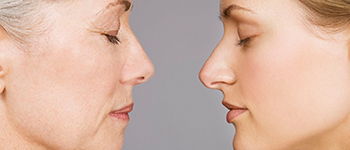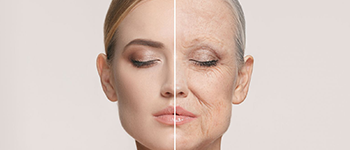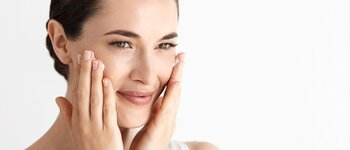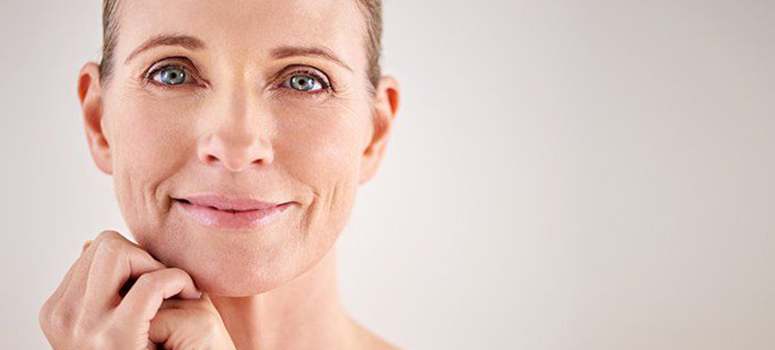Fine lines, wrinkles, and pigmented skin are signs of ageing skin. While it’s a natural process, there are some extrinsic factors that may cause premature ageing. There are ways of preventing or delaying this phenomenon, although one should understand them in detail. Expert dermatologist and cosmetologist, Dr Sachin Varma talks about skin ageing and various ways to ensure your skin delays any signs of ageing through several treatment methods.
Q1. Why does skin ageing occur?

Skin ageing is a natural process and is divided into two types – intrinsic ageing and extrinsic ageing. Intrinsic ageing on the one hand is genetically determined and you will find individuals age differently as it is attributed to a variety of factors. Genetics plays an important role in determining how early or how late your age is in the case of intrinsic ageing. On the other hand, extrinsic ageing is determined by external environmental factors like pollution and dust. It is further aggravated by smoking, alcohol intake, and overexposure to UVA and UVB rays among other factors. Skincare is also an essential factor in skin ageing. Moreover, about 70% of ageing is intrinsic while 30% is determined by extrinsic factors.
Q2. What changes occur when skin is ageing?

As your skin ages, there are a lot of changes that take place. Among the many changes that occur, the most common are:
-
-
- Thinning of skin
- Reduction in collagen and oil secretion
- Dry and pigmented skin
-
Uneven skin tone is the result of skin ageing due to dry and pigmented skin. However, the most visible effect of skin ageing is wrinkles which are the result of a lack of collagen. Apart from these effects of skin ageing, sagging of the skin can be seen in several individuals due to the loss of the underlying support structure. Therefore, wrinkles, sagging of skin, and loss of volume are three major effects of skin ageing along with dryness and thinning of the skin.
Q3. What are the measures to prevent skin ageing?

Generally, the effects of skin ageing are seen in an individual above 30 years of age. Therefore, the first step in preventing skin ageing is to prepare a good skin care regimen. A good skincare routine includes using a good quality cleanser, avoiding harsh pollutants, quitting smoking and caffeinated drinks, using a broad-spectrum sunscreen, and a good moisturizer. Following this skin care regimen is a great start to preventing skin ageing.
If you are beyond 30 years of age, include a good anti-ageing cream or lotion in your skincare routine. These anti-ageing creams contain retinol which speeds up the production of collagen in your skin and helps keep your skin healthy. You can also use hydraulic acid-based creams to retain moisture in your skin and keep it hydrated. Therefore, an anti-ageing treatment should begin after the age of 30 and should include a good cleanser, moisturizer, and sunscreen. However, in your 40s you should opt for anti-ageing procedures like chemical peels which are helpful in slowing down the skin ageing process.
After this, your skin correction treatment recommendation depends on how further along an individual is in the skin ageing process. In the case of wrinkles on the forehead and near the eyes, Botulinum Toxin can be used for its correction. If there’s a loss of volume, fillers can be used to add volume to the skin. Energy-based devices and procedures can be used to boost the skin and prevent sagging.
It is important that a proper clinical assessment is carried out before you opt for any skin correction treatments. Moreover, understanding the patients’ pain points is important before carrying out a skin ageing treatment.
The first step when a patient comes to the clinic for a skin ageing treatment is to get a good assessment. Also, setting up realistic expectations with the patient is important before the treatment. Unrealistic expectations can lead to dissatisfaction with the treatment. So, asking the patient to compare their current photograph with the one taken 10 years ago and point out what changes they are looking for in their skin is the best step forward. Setting clear guidelines with the patient regarding the skin correction treatment they have opted for before carrying it out is essential. Taking a pre-treatment consent is equally important.
Once the treatment plan is in place, the treatment modalities need to be taken into consideration. For example, if it’s superficial skin damage or texture abnormalities, they will require laser treatment. On the other hand, chemical peels also work in correcting skin damage and skin ageing. In the case of mid-level sagging skin, radio frequency-based devices like monopolar and bipolar laser help with its correction and in case of deep sagging of skin, high-intensity photo ultrasound treatments are used.
Correction of skin and increasing skin volume is the process followed in the treatment of skin ageing. However, overdoing any treatment is inadvisable. So, before you opt for any anti-ageing treatment, consult an expert doctor or dermatologist and avoid self-treatment and medication. To consult a dermatologist or cosmetologist in your area, visit: Skin & Hair Academy.














